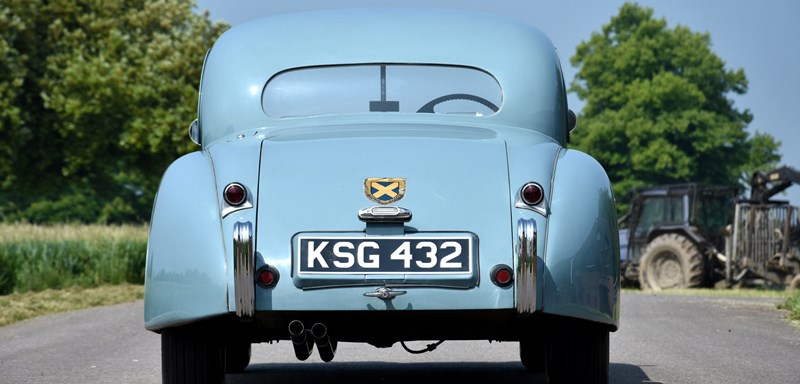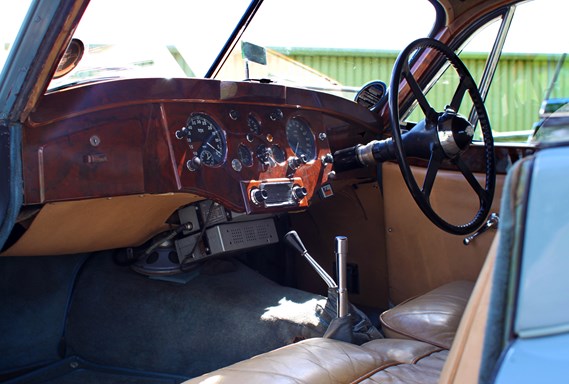
KEY DIFFERENCES BETWEEN THE JAGUAR XK120 AND JAGUAR XK150
The XK Jaguar came into existence almost by accident. William Lyons, the co-founder of Jaguar, had a new engine to sell, and Pressed Steel, the body manufacturer, could not provide Mark VII bodies for it without a large down payment for tooling.
Lyons desired a sleek sports car to showcase at the 1948 Earls Court Motor Show, and the XK120 became that car, featuring an all-new innovative aluminium body. Demand was significant, and after 242 units, the production switched to steel.
Jaguar’s first post-war sports car, the XK120 became an immediate success, with a beautiful shape and exemplary performance, which set new standards. The XK range consists of three main models - the XK120, XK140 and XK150 - spanning from 1948 to 1961 when it was replaced by the iconic Jaguar E-type.
We’ll be taking a look into Jaguar first and last XK sports car range, comparing their main differences and understanding what changed in that 13-year production. Keep reading to learn more, and if you’re searching for classic Jaguars for sale, visit the DM Historics website today.
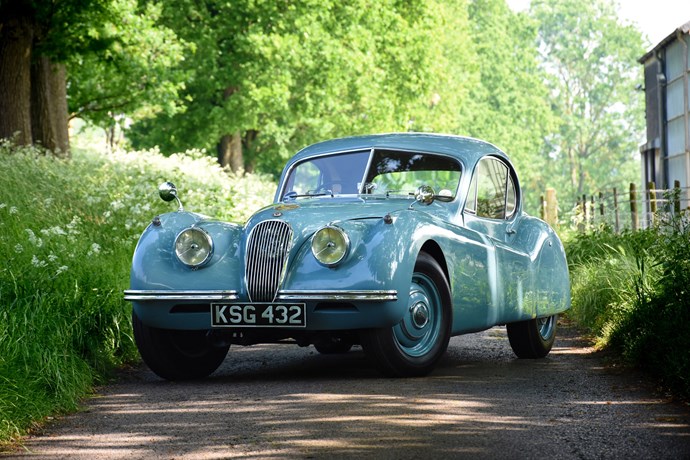
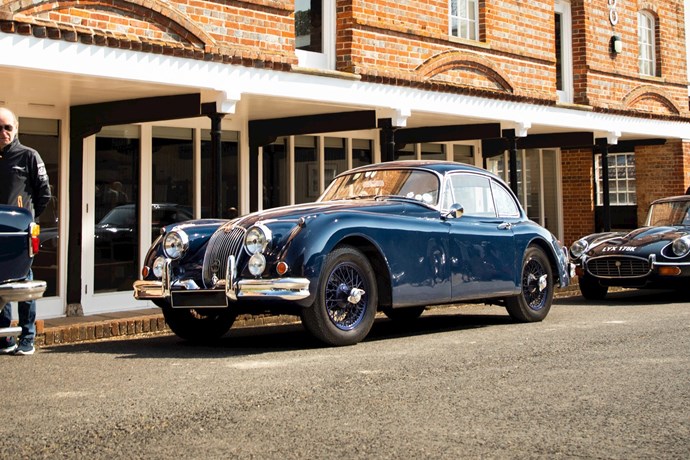
JAGUAR XK120 (1948 - 1954)
The Jaguar XK120 is the flagship XK model, much like the E-type external bonnet locker, it took inspiration from decades of Jaguar innovative engineering. It is arguably where Jaguar’s sports car story really began, with its performance that was unsurpassed its beauty.
At its reveal the XK120 was only available as an open two-seater, launched at the 1948 London Motor Show as test bed for Jaguar’s latest XK engine, a six-cylinder DOHC 3.4 Litre engine, the world’s first large-quantity twin-cam, endowed with top speed of 120mph making it the fast production car of its time. 1951 saw the more luxurious fixed-head coupe introduced with wood veneer dashboard and door caps.
Underneath the curvaceous bodywork was a robust steel chassis frame, independent front suspension by wishbones, longitudinally mounted torsion bars and an anti-roll bar. It also features semi-elliptic leaf springs at the rear; and telescopic shock absorbers were fitted at all four corners.
Initially 240 XK120 Roadsters were hand built, featuring an alloy body over an ash frame. This made them ‘lightweight’ and today rare and desirable. The ‘Special Equipment’ models - similarly available on later models – featured an uprated engine, dual exhausts, and wire wheels as standard, making these particular examples stand out from their competitors and appealing to a performance driven buyer.
The XK120 Roadster was a raw and pure XK; it was regularly raced, rallied and campaigned at topflight international events such as the Mille Miglia, Le Mans, and Alpine Rally. It was finally superseded by development and launch of the XK140 in 1954.
By todays standards the Jaguar XK120 still holds its own, providing fantastic speed and power packaged in classic and beautifully design body. While the cabin feels cosy, there is often a general lack of precision through ‘wandering’ steering and of course the classic ‘moss box’ transmission that requires a skillset that most drivers do not obtain, the Jaguar XK120 is a true piece of automotive history, offering an unrivalled insight in period driving, highly sought after, even for its foibles.
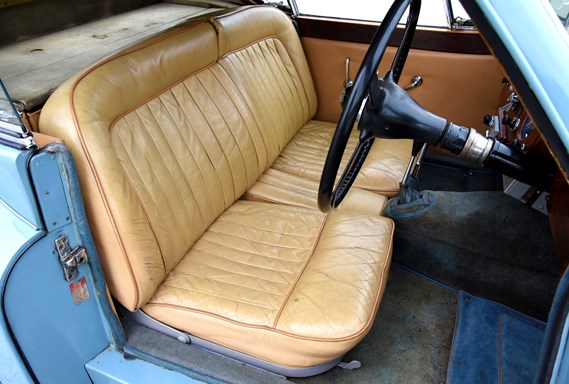
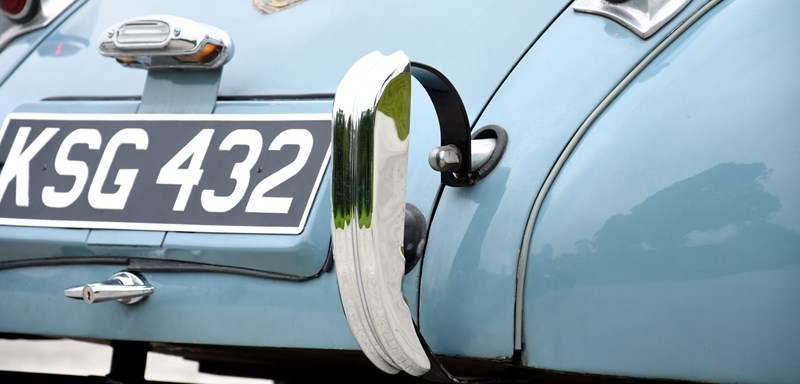
JAGUAR XK150 (1957 - 1961)
Jumping forward, just short of a decade, to the last development of the XK sports cars, the Jaguar XK150 was a very different car. Following the natural development of the XK120, XK140, the XK150 was, visually, the most unique of the entire XK range. The XK150 was considered to be substantially ‘modern’, featuring a single-piece wraparound windscreen, a refined wing line, all around disc brakes as standard and featured thinner doors that increased the overall interior space.
At launch the XK150 was available as a fixed head coupe and drop head coupe, unlike the XK120 the open two-seater roadster wasn’t introduced until later in 1958. Whilst both cars that had gone before had just a 3.4 Litre engine, the XK150 was offered with either a 3.4 Litre or a 3.8 Litre engine. Both were offered with uprated ‘S’ variants and a range of transmission types available.
When first launched, the top speed of the XK150 sadly didn’t stack up to its predecessors, a result of its increased curb side weight. Jaguar corrected this concern quickly with the launch, in 1958, of the 3.4 ‘S’ version, with straight-port heads delivering a lusty 250bhp. It was with this XK variant that Jaguar began to lean more towards the grand tourer end of the sports car scale.
The XK150 offers a much more spacious cabin, an instant improvement over the early models. Walnut dashboards were out and fully leather trimmed dashboards were fitted as standard. On the earliest drop head coupes an aluminium centre dash was available, similar to the Jaguar E-types 3.8 interior, but this was swiftly discounted after June 1958.
Today, like its predecessors, the XK150 offers a unique driving experience, standing true to Jaguar winning formula, more power for less money. Offering many similarities to the Jaguar E-type, the XK150 has the added bonus of a art deco styling, with the capability of long distance cruising, an ideal investment purchase for any classic car enthusiast.
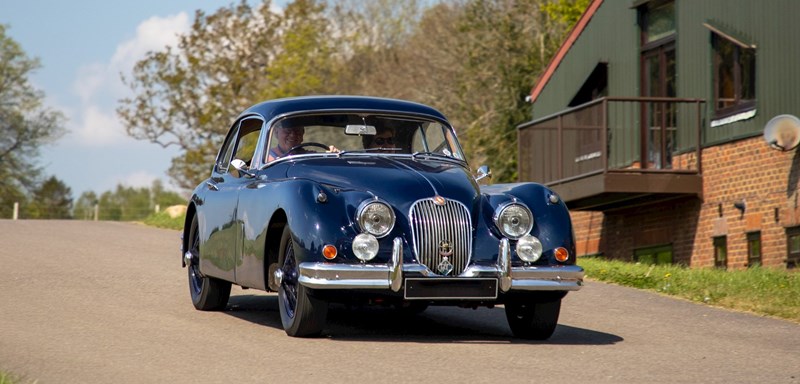
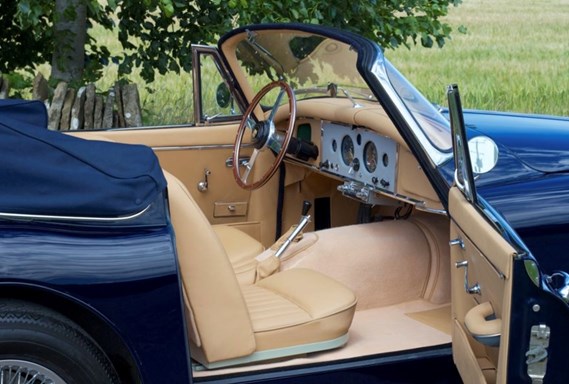
IN SUMMARY
Overall, both the Jaguar XK120 and Jaguar XK150 cars are excellent choices of classic cars for any Jaguar enthusiast to consider. And, it’s interesting to note the sales figures from the time - with more than 12,000 XK120s and 9,400 XK150s finding customers during the carmaker’s long production run which continued until 1961.
Whether you are searching for a Jaguar XK120 for sale, or a Jaguar XK150, DM Historics can assist you. We specialise in the sale of classic sports cars, with a particular focus on classic Jaguar vehicles. Our experts boast a wealth of knowledge in various marques including Jaguar, Aston Martin, Ferrari and Lotus.
We provide a first-class purchase and sales experience for classic sports cars and competition cars. Our excellent selection of handpicked classic sports cars for sale features some of the finest classic Jaguars available on the market. And, all of our cars have undergone a strict inspection for quality before being displayed in our showroom.
If you would like to find out more about the Jaguar XK120 and Jaguar XK150 cars, as well as explore the collection of classic Jaguars we have on sale right now, then please do not hesitate to contact us today.
We’re here to answer any questions you have, and provide you with more information about our sales services. You can reach us today on +44 (0) 1732 440 494 to speak with a member of our team.
